Modelling the Metropolis: The Architectural Model in Victorian London (2023) – Review
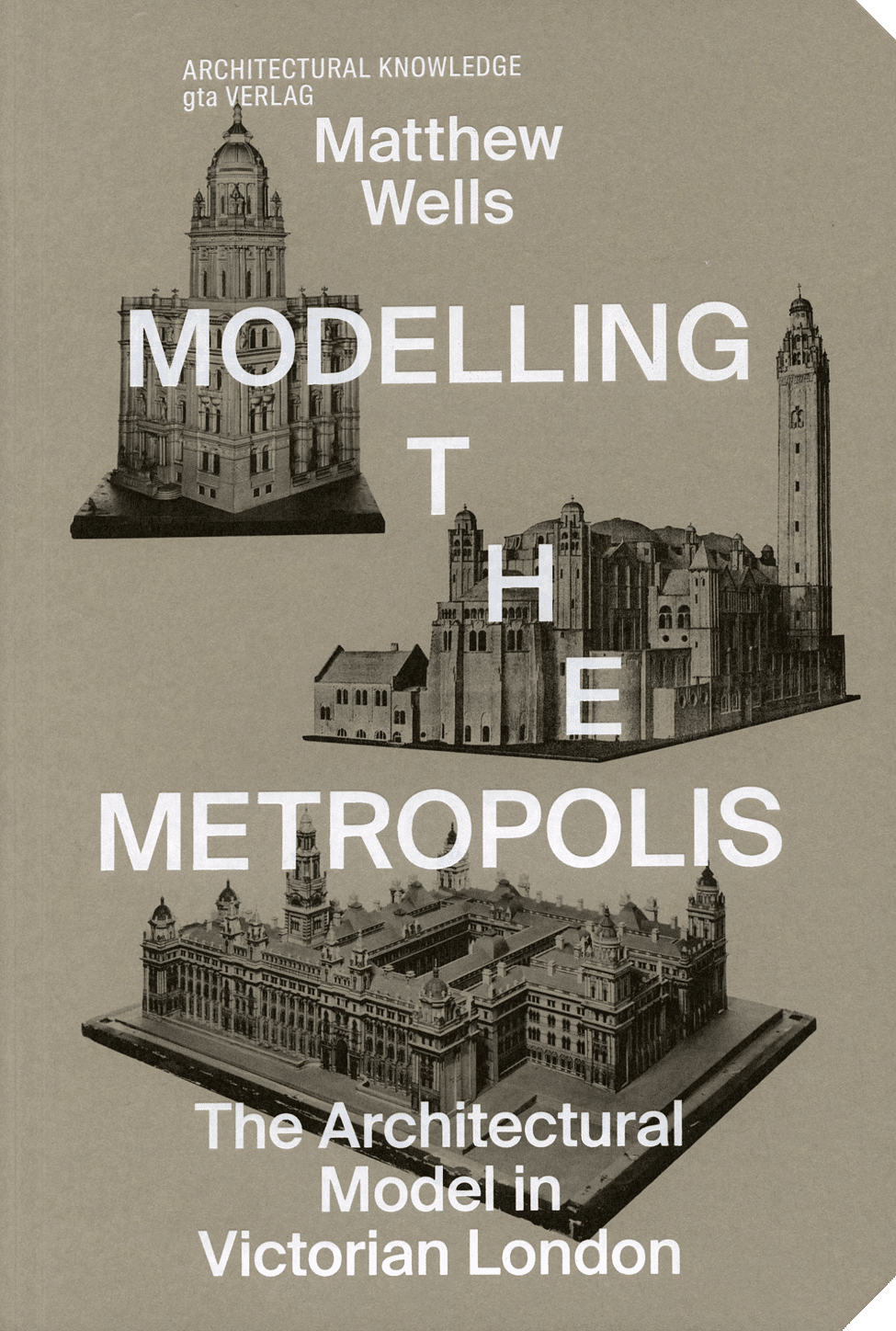
Throughout this book, Matthew Wells sets his face against seeing architectural models as objects in themselves. His preoccupation is with their many uses and, therefore, meanings, which gives Modelling the Metropolis an originality but also an academic flavour which will appeal to some more than others. Though not a book for collectors, it is full of provoking thoughts about the alternatives to drawings as ways of projecting future buildings or understanding existing ones.
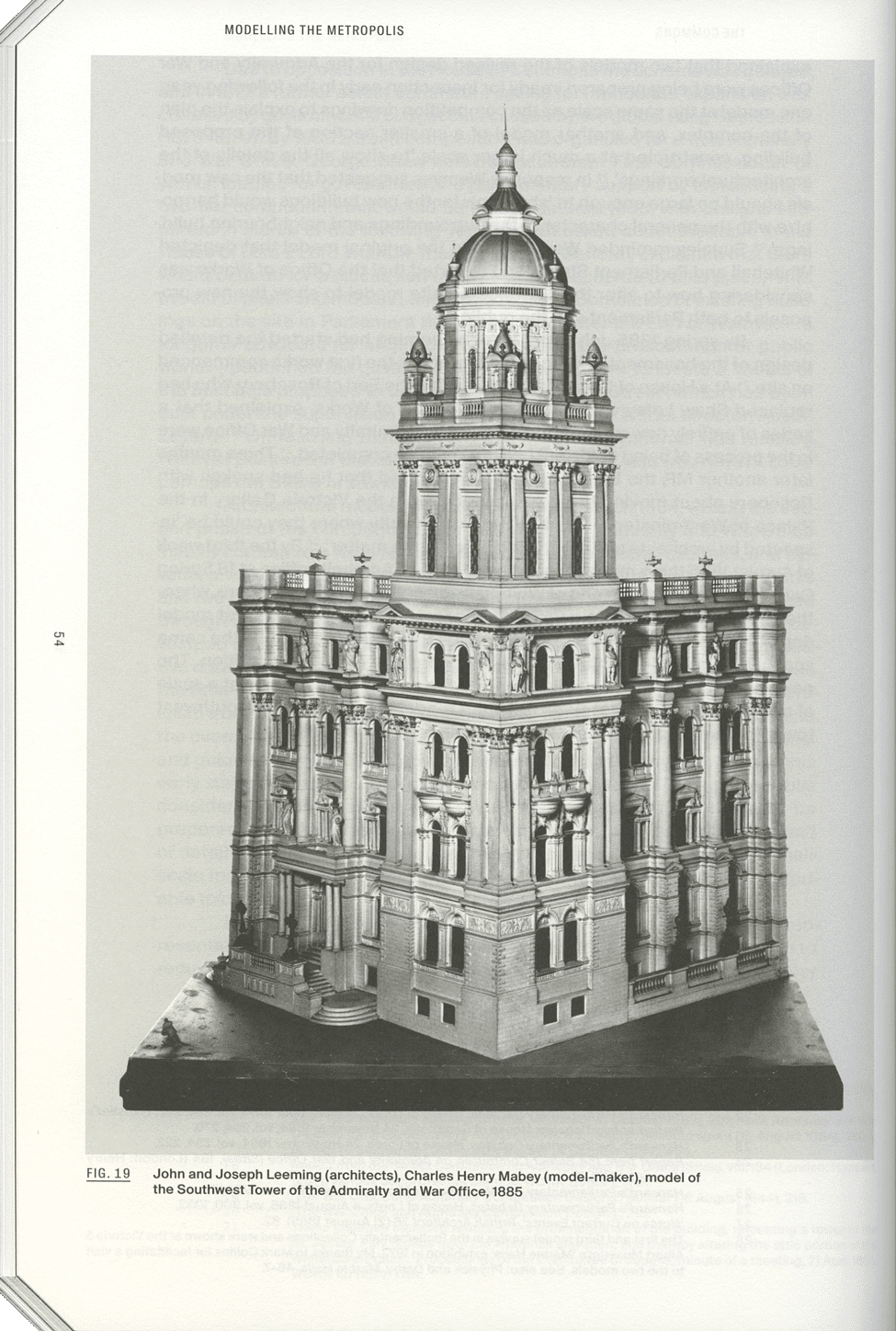
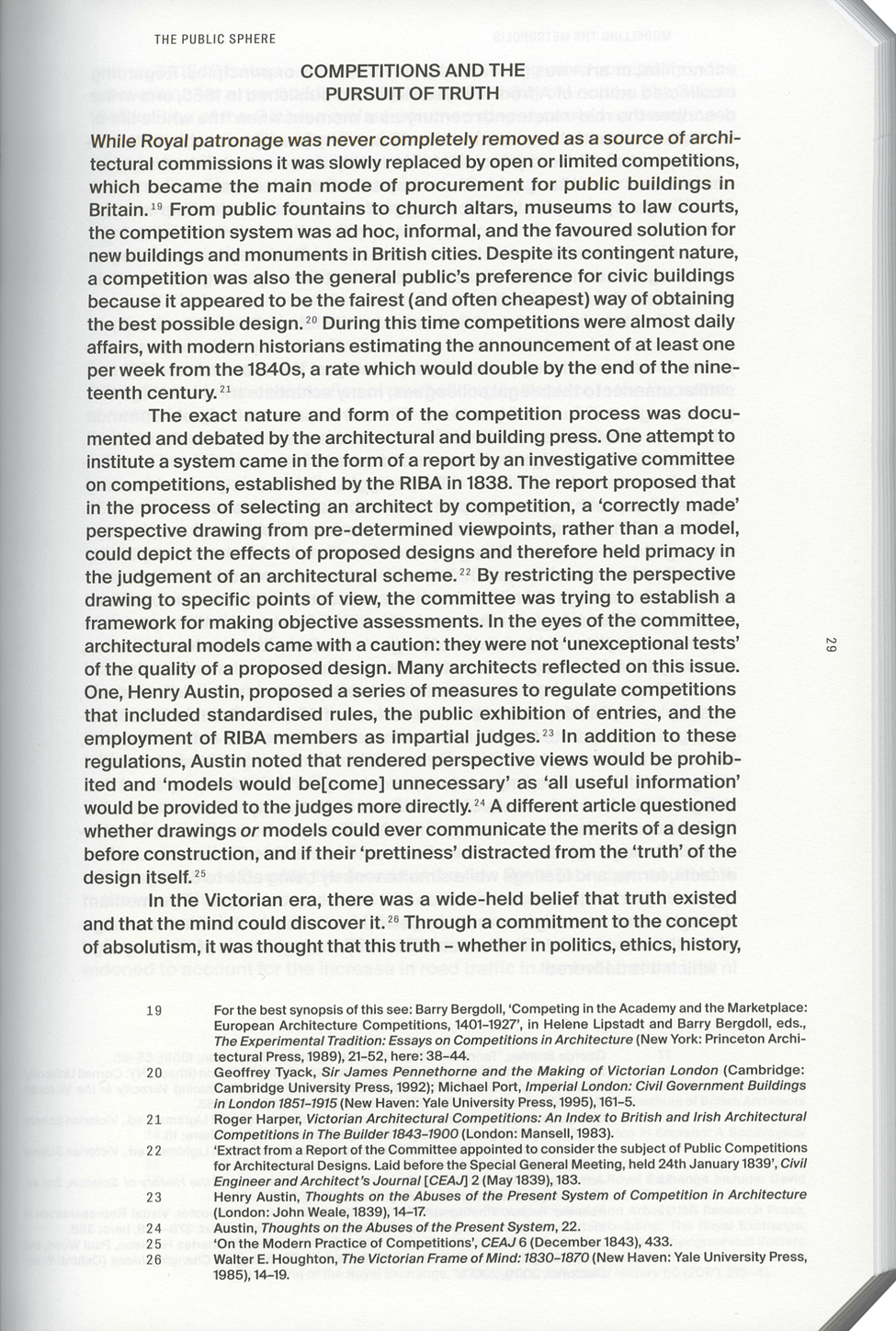
In interpreting architectural projects, built or proposed, one might suppose that models would be more faithful guides or at least more easily read than drawings. The author shows that was not necessarily the case. Scale, context, lighting, and colour could all mislead the unwary amateur, whereas non-perspectival drawings, if less accessible, embodied a certain objectivity. Nevertheless, major Victorian building projects saw a growing call for models, not least because they could be more readily altered and adjusted than drawings. Two cases examined by Wells are William Burges’ designs for decorating St Paul’s Cathedral and Leeming and Leeming’s Admiralty buildings in Whitehall. At St Paul’s, the insistence on models came from Burges, the professional, but it did him no good and his scheme was shelved. At the Admiralty it was the client who wanted models, as the project changed in response to a changing brief.
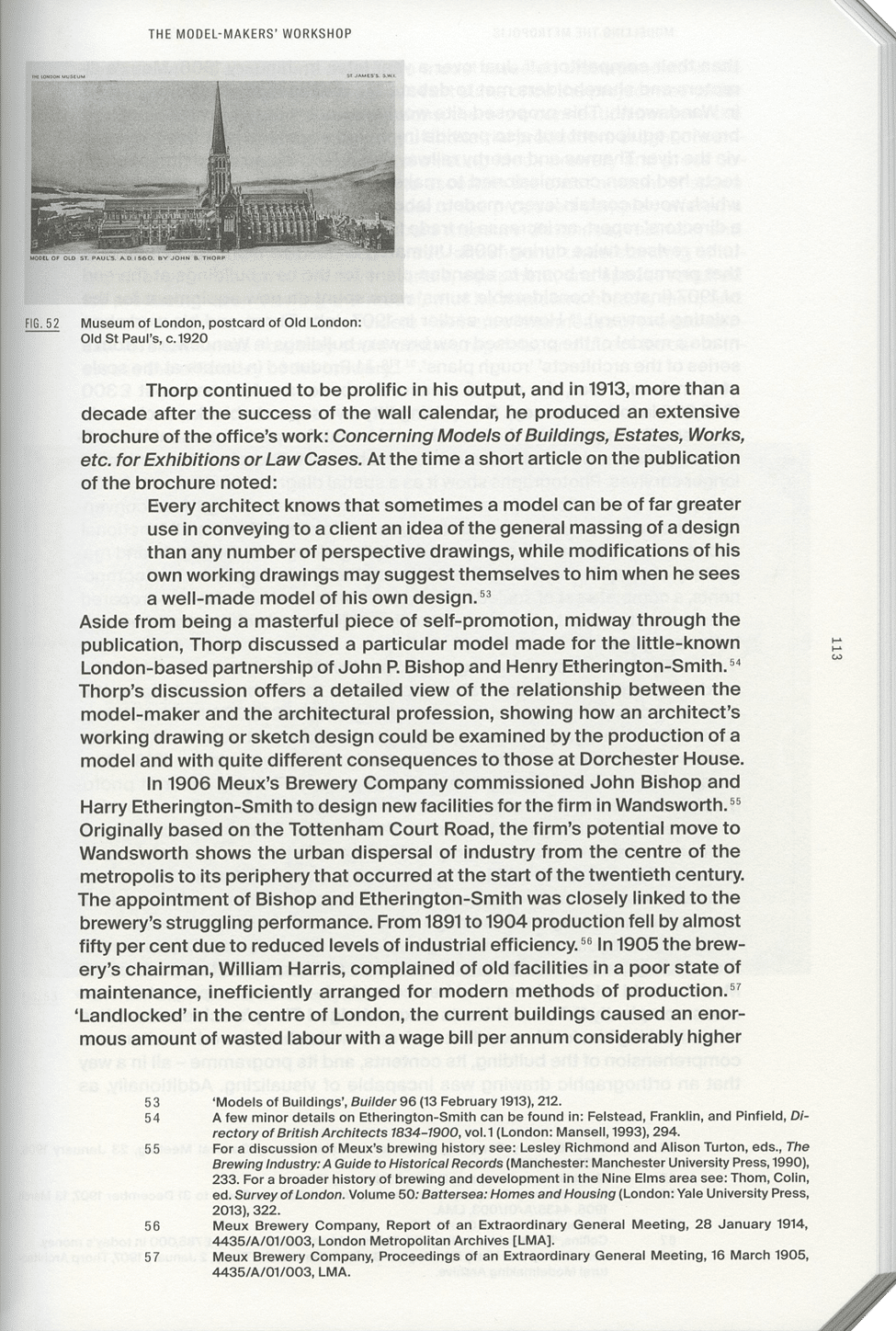

The book is neatly arranged according to different categories of use for models. An unusual and stimulating chapter discusses the courtroom presence of models in legal disputes about light and air, faulty construction and so forth. Models of this type tended to be functional in nature, showing only bits of buildings. Indeed, few of the models shown by Wells look pretty. An exception is the case of two lost models of very three-dimensional house designs made by the Arts and Crafts architect E. S. Prior who, curiously, argued that they were for architects, not clients: ‘it is dangerous to show what is so near the truth’. A chapter about London model-makers concentrates on Richard Day, who made a series of well-documented models for Vulliamy’s Dorchester House, and later in the century the self-publicising John B. Thorp. One could have wished for more on the model-makers. Many were sculptors or carvers who went into modelling to make ends meet.
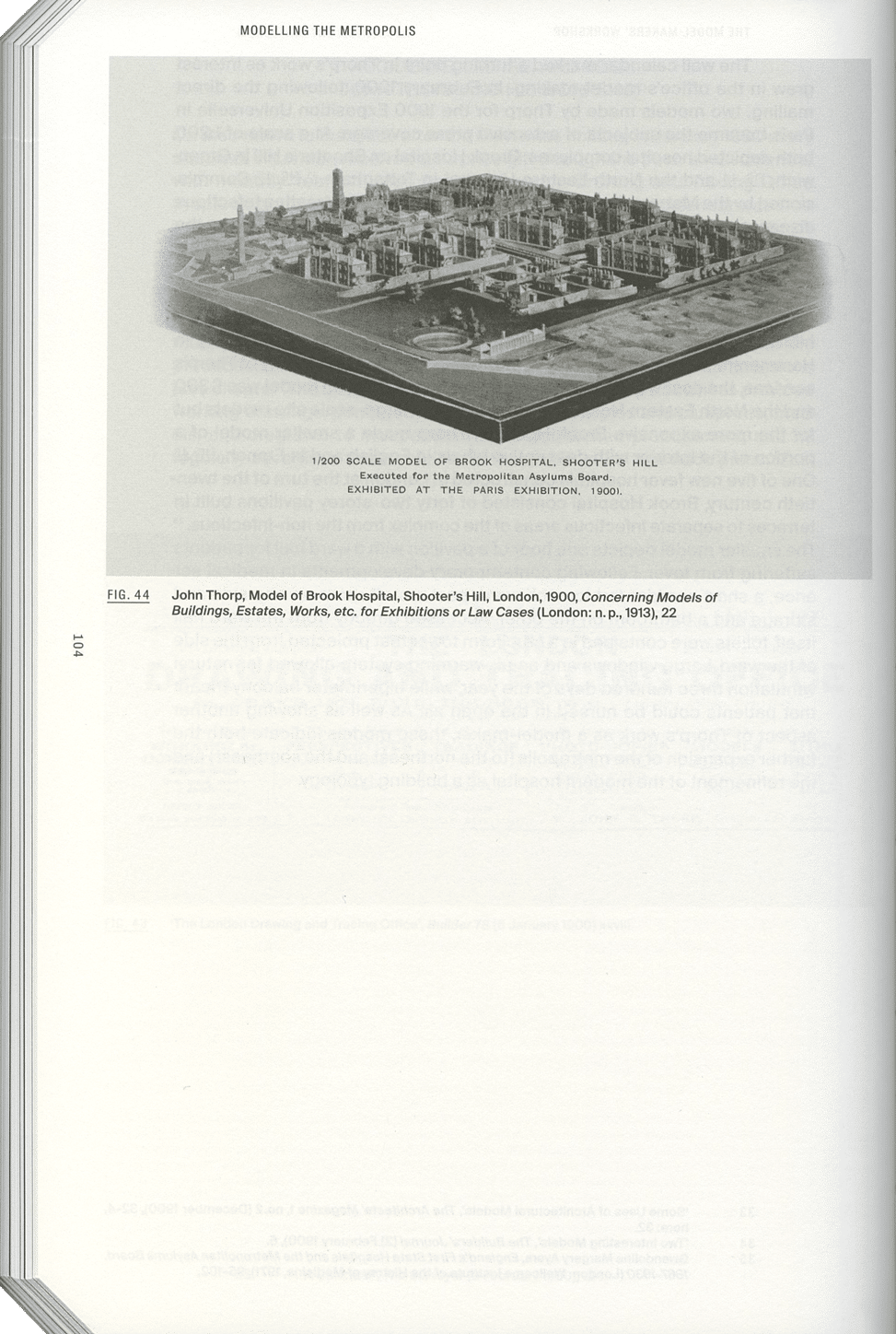
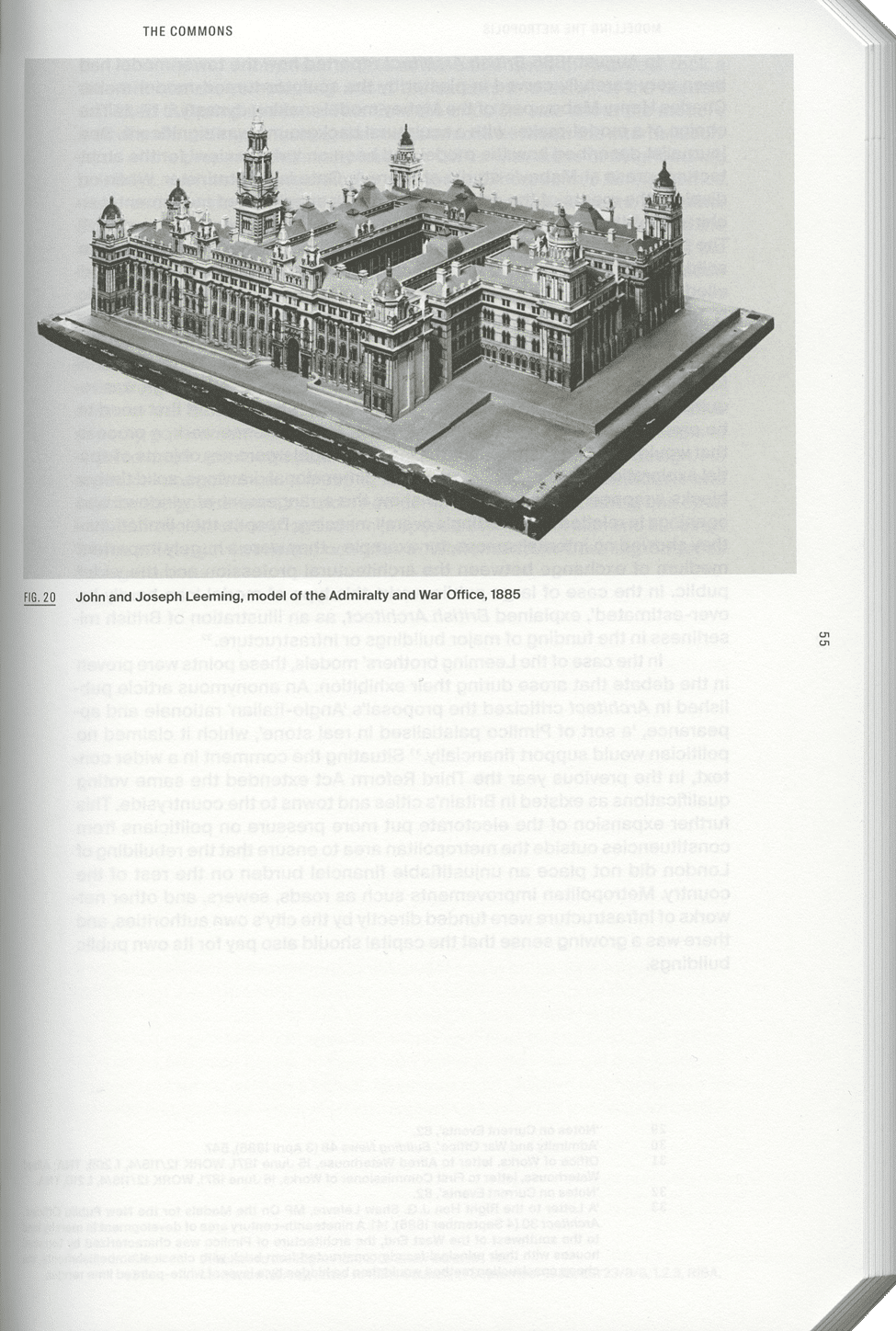
Later chapters in the book concentrate on the architectural model in exhibitions, museums and teaching. On the whole the poor old model has had a sad time of it. For instance, the rich collections of the Architectural Museum that originated at the V&A Museum in London, which consisted of mainly casts of details, were moved back and forth between locations before being consigned to dusty basements and in due course mostly discarded. Drawings, even of second-rate projects, are so much easier to store. Few of the models discussed by Wells appear to survive.
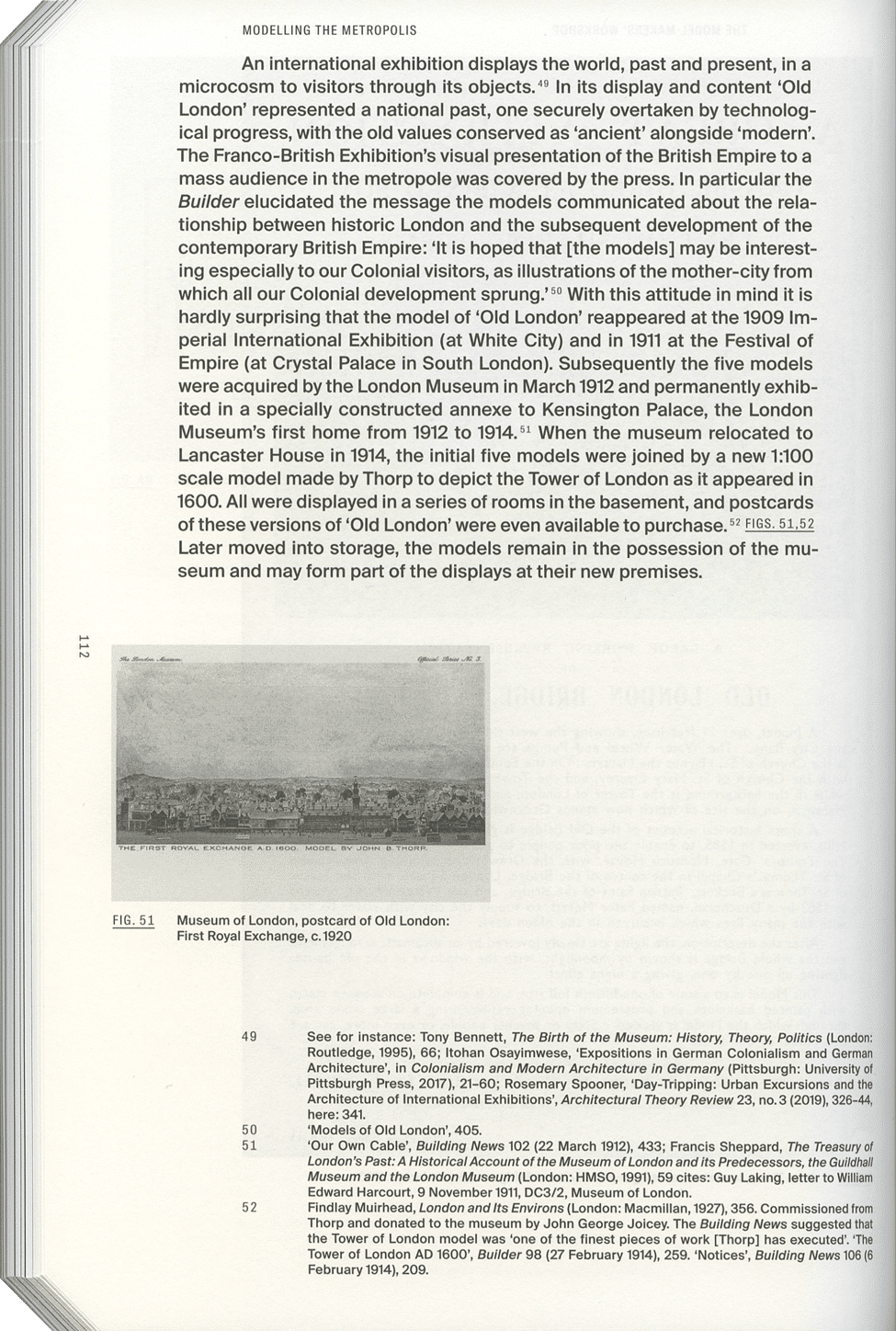
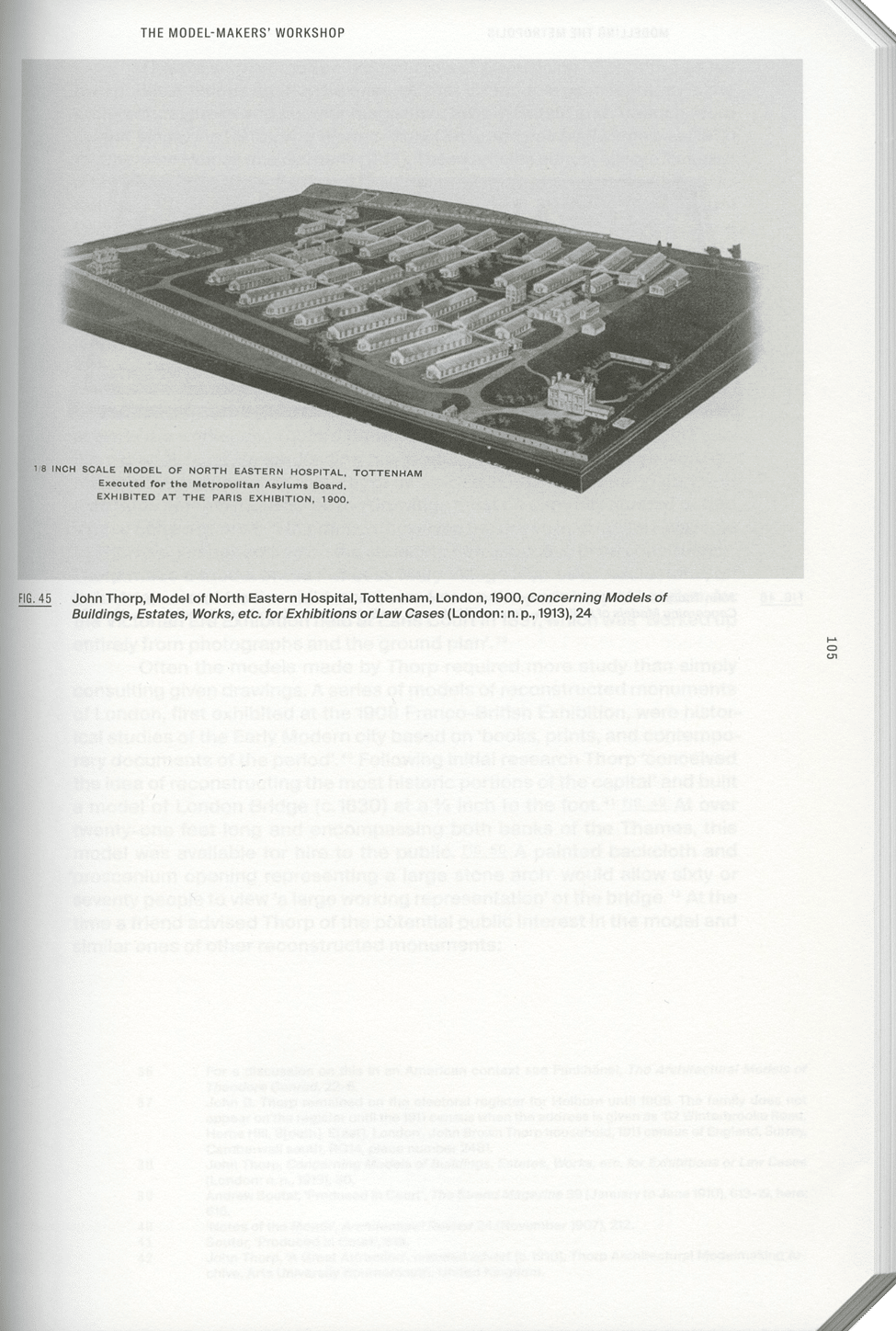
This is a useful and stimulating if occasionally ponderous book, rather eccentric in design, with bevelled corners and page numbers printed at right-angles up the sides.
Matthew Wells Modelling the Metropolis: The Architectural Model in Victorian London (2023) is published by gta Verlag. Copies of the book can be purchased here.
Andrew Saint is an architectural historian.
